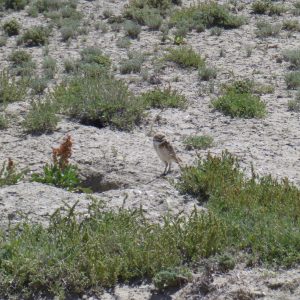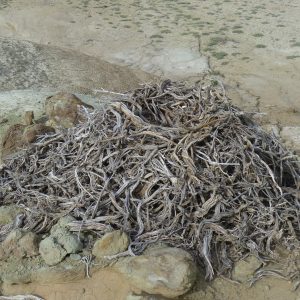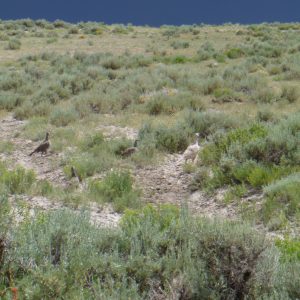The high desert district of southwest Wyoming may seem like a barren land, but in reality it is host to a whole cast of interesting critters. While mapping Mountain Plover habitat, our paths were constantly crossed by quick-footed prairie dogs (or p-dogs) and ground squirrels. P-dogs not so anxious to get across the road ahead of us sat on their burrows, Buddha-bellies inflated in front of them. More excitingly, we were lucky enough to spot three Burrowing Owls in, which had taken over two former p-dog abodes. Burrowing Owls take advantage of the many burrows created by p-dogs. Burrowing Owls are shy when approached by humans on foot, but surprisingly remain sentinel by their burrows when approached by trucks, which allowed us some pretty good views and photos. We had an opportunity to learn about other neat owls in Wyoming when we did an owl survey late one clear night during a full moon. We spent that time with members of the Forest Service working in Bridger National Forest. Three sensitive owls live in southwest Wyoming, including the Boreal Owl and the Great Grey Owl. We stood under the stars and broadcasted the calls of these owls from what looked like a small stereo with two speakers in hopes that any nearby owls would return with their own calls. Being late in the season for owl surveys, we were fortunate to hear a Great Horned Owl.
We’ve spent much of our time continuing Mountain Plover habitat mapping–for which we have covered approximately 25,000 acres. We have also participated in Multiple Indicator Monitoring (MIM) to assess stream quality and Proper Functioning Condition (PFC) assessments for streams. During all this time we’ve spotted multiple species of raptors, including the Ferruginous Hawk (a.k.a. ferroog), Red-tailed Hawk, Golden Eagle, Bald Eagle, Kestrel, and Northern Harrier. The nest below is a nest made by a ferroog. They typically build their nests on cliffs or rock ledges. We saw some recent Golden Eagle fledglings, who were taking frequent rests on ridges.
Another disheartening, but enlightening wildlife find would be the multiple dead fawn we have found throughout our travels. Wyoming experienced a particularly harsh winter, and it took its tole on the mule deer population. It has indicated that only 16% of the newborn fawn survived through the winter and spring months. Luckily the mule deer that have survived look hardy and healthy.
The highlight of the last couple weeks would have to be the spotting of the rare light morph Greater Sage Grouse hen and her six poults of normal gray coloration. No one in our field office had seen a sage grouse of such coloration and our photo below was added to the office wall of fame.
-Larry Ashton and Kira Hefty



